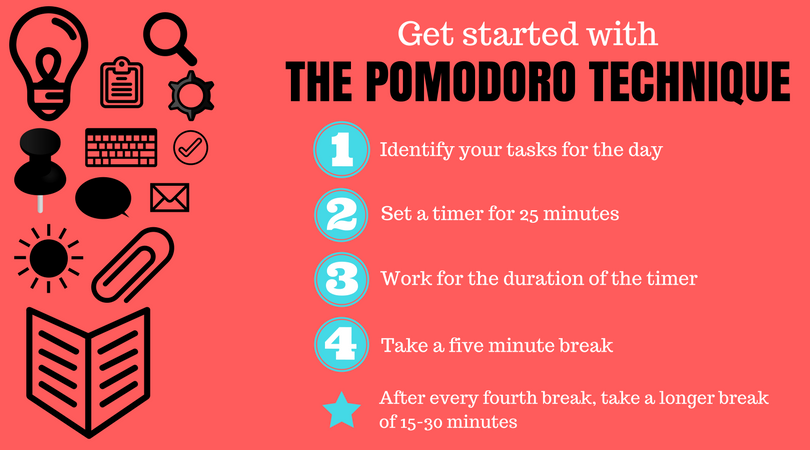The Pomodoro Technique is a time management system that encourages people to work with the time they have—rather than against it. It helps you break down your workload into small, manageable chunks. This technique helps you stay focused on tasks that require long periods of concentration.
Who invented this technique?
The Pomodoro Technique was created by software developer and entrepreneur Francesco Cirillo. He named the system after a tomato-shaped kitchen timer that he used to keep himself focused and productive when he was a university student.
How does it work?
Each 25-minute work block is called a Pomodoro. The principle behind it is to have you focus for a short period of time, then take a break. Most sources suggest linking four Pomodoros together and then taking a longer break.

The Rules:
- A Pomodoro can’t be interrupted; it marks 25 minutes of pure work.
- A Pomodoro can’t be split up; there is no such thing as half of a Pomodoro or a quarter.
- You are not allowed to keep on working “just for a few more minutes” even if you’re convinced that in those few minutes you could complete the task at hand.
- When the Pomodoro rings, mark an X next to the activity you’ve been working on and take a break for 5 minutes.
How To Use The Pomodoro Technique
We begin by creating a list of the things we want to accomplish. Then, estimate how much time it would take us to accomplish each task. Cirillo suggests we call this list the Activity Inventory Sheet. Then, sort all these tasks according to priority and put them in a separate sheet called the To Do Today list.
Taking Breaks
After completing a Pomodoro, take a short break to “disconnect” from your work. Stretching, brewing coffee, or getting the mail in are some options for your breaks. Never engage in activities that call for heavy mental effort during breaks.
Cirillo explains that tasks, like talking to a colleague about work-related issues or writing important emails, will reduce alertness at the start of the next Pomodoro.